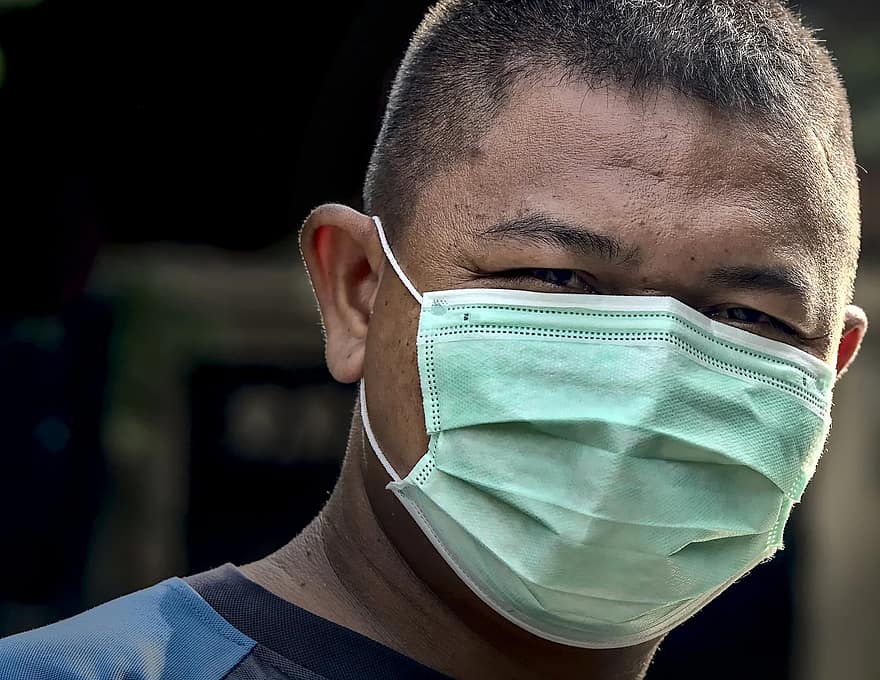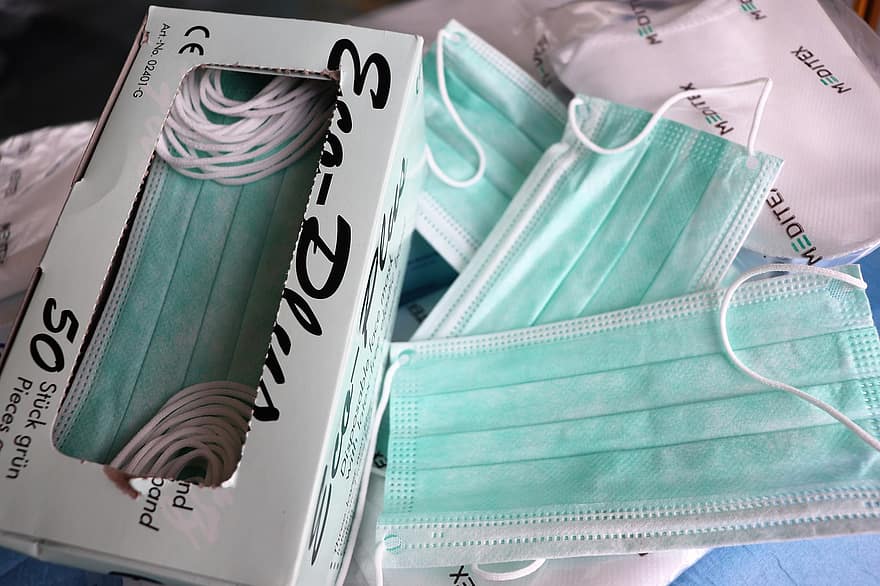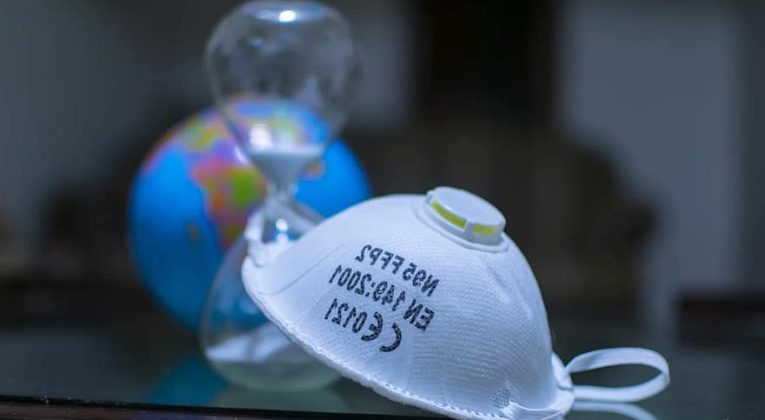Some links to products and partners on this website will earn an affiliate commission.
InsideFlyer recently had the chance to discuss COVID-19 and travel with Hans Jørn Jepsen Kolmos, Professor of Clinical Microbiology at the University of Southern Denmark. Professor Kolmos believes that facial masks can be part of the solution to protect travellers – but is not convinced that wearing them throughout a flight is actually effective.
Multiple airlines have recently announced that they will require passengers to wear masks, but whether in-flight masks are an effective measure against coronavirus infection is far from certain. InsideFlyer asked Professor of Clinical Microbiology at the University of Southern Denmark, Hans Jørn Jepsen Kolmos, to help educate travellers on the best ways to protect themselves against COVID-19 when flying.
How well does a mask protect?

Publicly available facial protection masks come in many varieties and provide different levels of protection. In general, these masks can be divided into three main groups: fabric masks, surgical masks and N95 respirators.
The fabric masks are the least effective and are generally not recommended to use for virus protection. After that come surgical masks, and at the top N95 respirators. It is important to note though that even N95 respirators are not completely effective at preventing viral infection.
“Surgical masks and N95 respirators are quite effective as long as they are dry. However neither surgical masks nor the respirators can guarantee with 100% certainty, that you won’t get infected while wearing them. You are even still likely to transfer the virus whilst wearing the mask. A surgical mask for instance lets roughly a quarter of particles in the air pass, when inhaling, meaning that you reduce the risk of getting infected by 75%. When exhaling, up to half of the particles will pass. N95 respirators are more effective, and provides 95% protection from getting infected, while it lets 30% of the liquid in exhalation air pass outwards.”
Hans Jørn Jepsen Kolmos, Professor of Clinical Microbiology at University of Southern Denmark
Hans Jørn directly warns against the use of fabric masks, as their effect is not proven, and in the worst case, could actually be counterproductive:
“It is important to underline, that only surgical masks and certified respirators are effective. Fabric masks are more permeable for drops and particles, and one should therefore ensure that only masks of documented quality are used.”
Do masks create a false sense of security?

For that question, there is no short answer. Everything depends on the circumstances that you use the masks for. If the mask is used for short periods of time, and you disinfect your hands often, the mask can be helpful. The mask, however, also has to be used rationally and not just as a standardised habit or ritual.
Infections do not care about rituals, and masks are only helpful in situations with a high likelihood of being exposed to infections. Those could, for instance, be during boarding, while visiting the lavatory, or when leaving the aircraft. During the flight, the mask, however, can cause more problems than it helps.
“Masks can be effective, if used at the right time, in the right way. The mask can however also provide a false sense of security, if used without rationale. A mask is only effective as long as it’s dry. In our exhalation air there is moisture, and it varies for how long the masks will be effective. It’s however estimated that a mask will not be effective for more than a couple of hours.”
Masks do not only lose their protective properties by getting wet. Another thing that reduces their effectiveness is when you touch the mask or your face.
“When touching the mask – for instance when drinking coffee, repositioning it (a lot of people don’t realise how uncomfortable wearing masks for an extended period is), etc – you can contaminate your fingers with virus particles on the mask itself. Therefore masks alone cannot be the only protective equipment used and should be limited to rationally selected tasks and time frames.”
How should airlines protect passengers?

Hans Jørn has a suggestion for when masks could be useful when travelling. He believes that, for instance, it could be helpful to use masks during boarding, or when passengers leave the aircraft. However, he points out, that hand sanitiser is the most important factor in protecting passengers from getting infected with COVID-19.
“It’s imaginable that airlines would distribute masks prior to boarding. Passengers could then wear the masks during boarding, and remove them when they are seated. When the plane has landed, masks could then again be distributed, for the passengers to wear, until they have claimed their luggage.
The most important precaution based on my knowledge, is hand sanitiser. It is important that passengers disinfect their hands, and avoid touching their faces as much as possible, especially after touching the mask. It is similarly important that passengers disinfect their hands before eating or drinking anything. A proper disinfection of hands takes 20-30 seconds, and you should use an amount of sanitiser that equals it taking 20-30 seconds to rub in to the fingers, so that the skin feels dry.”
InsideFlyer’s suggestions for safer air travel

Based on Hans Jørn Jepsen Kolmos’ insights, the InsideFlyer team has made a list of five suggestions to help make air travel safer:
- Masks at boarding: Distribute certified masks to passengers, and make sure that there is hand sanitiser available at the gate. Passengers should furthermore be instructed to remove the mask, once taxiing to the runway.
- Hand sanitiser in sufficient amounts: Make sure that hand sanitiser is available during the flight, and is regularly distributed by the cabin crew. At the same time, make sure that passengers are instructed in disinfecting their hands in a proper manner. Include this in the safety instructions before takeoff.
- Limited mobility: Moving around in the cabin should be limited unless the passenger is going to the lavatory. When visiting the lavatory, cabin crew should be contacted, and instruct the passenger to use a specific lavatory, so queues don’t form. Masks and hand sanitiser could be given to the passenger at this point.
- Smart boarding procedure: Boarding should be executed in order of passengers seating. One suggestion could be to board from the window seats towards the aisle so that the passengers won’t be trapped closely in the aisle during boarding.
- Smart disembarking procedure: A new mask should be distributed to passengers just before arrival, and they should be instructed to leave the plane in a manner so that queues don’t form. This will be time-consuming but is very important. Cabin Crew can, for instance, guide the passengers on when to leave their seat.
Who is the expert?

Hans Jørn Jepsen Kolmos is Professor of Clinical Microbiology at the University of Southern Denmark. Hans Jørn got his PhD in medicine in 1974, and in 1986 acquired his title as a specialist in microbiology. Since then, he has become a professor in the same field, focusing on infection control and infection prevention.
All pictures from Pikist






I won’t fly while masks are mandatory. I’m fully behind risk minimisation but have seen no evidence of the efficacy of masks other than the N95’s, only conjecture.
People need to remove their masks to eat and drink, so they won’t even be worn for the full flight duration. You can’t wear one if you have a beard (well, you can, but it is not deemed to be fitting properly). They make glasses steam up. Plenty of other complications, including claustrophobia – anyone who already had anxiety while flying just won’t be able to cope at all. It’s just overkill.